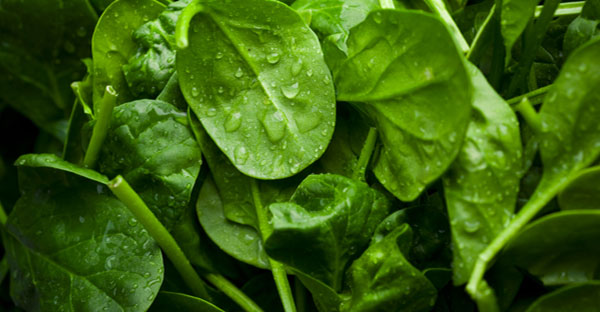

Positive acid/alkaline balance is one of the most important factors in athletic performance. In my opinion, by disregarding this fact, sport supplement manufacturers have significantly reduced the effectiveness of their products. In fact some of the energy bars currently on the market are the worst offenders. Processed for the sake of shelf life and convenience, and consequently denatured and acid forming, many energy bars are not much more than disguised junk food.
When acidic forming food is consumed, starting with digestion and continuing until elimination, it produces toxins that the body must deal with. Denatured foods are toxin producers and as a result have the greatest negative impact on pH balance within the body. Highly refined and processed, denatured foods are void of any usable nutrients, yet retain their caloric value – the worst combination. Toxins in the body lead to premature aging through cell degeneration. Aside from food, most prescription drugs, artificial sweeteners and synthetic vitamin and mineral supplements are extremely acid-forming.
Athletes in peak training are the most affected by acidosis. Vigorous exercise creates stress in terms of muscle trauma cased by the workout. Physiologically speaking, hard exercise is the stressor but equally important is rest and recovery. The correct balance of theses two opposing elements is the recipe for growth. Already physically stressed, many athletes also must deal with various types of performance anxiety. An increased metabolism is yet another factor athletes are met with, further lowering pH. Furthermore, athletes require more food in general with an emphasis on protein to aid muscle recovery.
For recovery to be expedited, alkalizing foods, such as those rich in chlorophyll, need to be consumed soon after exercise. Protein must also be consumed to help repair broken down muscle tissue. As with processed energy bars, numerous sport supplements touted as post-work-out recovery agents contain highly processed, manufactured proteins usually in the form of denatured isolates, which are acid forming. Suggesting they be consumed soon after a workout will fulfil the body’s need for protein, but completely neglect its need for pH balancing.
The paradox is this; most protein sources are highly acid forming, yet the highly alkaline forming foods are generally low in protein. This can be overcome if the protein sources are chosen carefully. Raw, unprocessed, natural, hemp protein, for example, measures at about 50% protein, yet is greatly less acid forming than common denatured ones such as soy and whey. Hemp’s higher pH level can be attributed in part to chlorophyll content, responsible for its green colour. Chlorella is another great protein-rich pH booster, containing almost 70% protein, yet it is highly alkalizing. As a general rule, the most alkalizing foods are raw, unprocessed, whole and rich in chlorophyll. Raw, sprouted legumes such as lentils, beans and seeds are also a superior source of alkalizing protein. Also, a diet high in leafy green vegetables, which are excellent sources of chlorophyll, will help insure the system remains alkaline even when stress levels are elevated.
In addition to curtailing recovery, pH imbalance is a trigger for many ailments. Those who maintain an acidic environment within their body are also prone to fatigue. Since acidity is a stressor, cortisol levels rise resulting in impaired sleep quality, thus further exacerbating the problem.
Contrary to popular belief, it is stress and the over consumption of acid forming foods, not a lack of dietary calcium, that lead to most cases of poor bone health and eventually osteoporosis. The blood itself will always remain neutral as this is imperative for survival. However, if the body is consistently fed acid forming denatured foods and supplements, or encounters stress from other sources, it must take measures to ensure a neutral blood pH is maintained. To do so, the body pulls alkaline calcium from the bones. Over time, the bones become weaker as a result of this survival mechanism.
The conventional way of treating low calcium levels and osteoporosis is to simply suggest the person take more calcium, usually in the form of tablets. The calcium source in tablets is generally derived from materials such as oyster shells, bovine bone meal, coral and dolomite (rock), all of which are extremely hard and unnatural for the body to assimilate. The large size and recommended daily number to be consumed is a testament to their poor bioavailability. The body must work very hard to get calcium from these sources, another reason why this method of boosting calcium levels in our body is inferior.
Low-grade metabolic acidosis as it is termed, is another symptom of an over acidic body. It has been cited as a leading cause of several health concerns such as the development of kidney stones, loss of bone mass, and the reduction of growth hormone, therefore resulting in a decline in lean muscle mass and an increase of body fat. Since low-grade metabolic acidosis affects the body at a cellular level it is also responsible for an increase in the fabrication of free radicals, and a loss in cellular energy production. In addition to these serious concerns, viral and bacterial growth is able to thrive in an acidic body, possibly leading to a wide variety of diseases. On the other hand disease is rare in an alkaline body; cancer, for example, cannot develop in an alkaline environment.
Though diet has the single greatest impact on the body’s pH balance, there are other things that can also help. For example, taking time out of a busy schedule to do something pleasurable yet seemingly unproductive can actually be a key ingredient to improved pH balance, improved health and longevity.
Copyright 2024 Center for Nutrition Studies. All rights reserved.